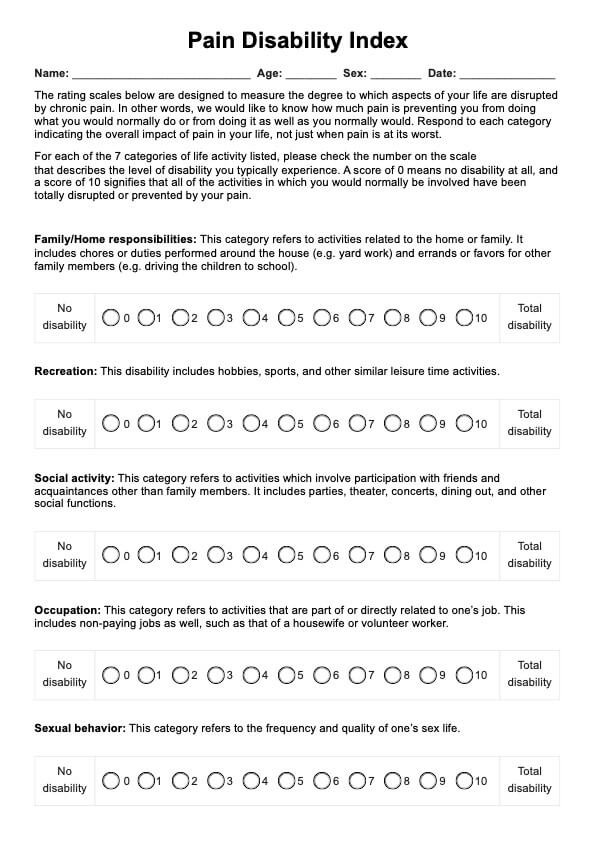The Pain Disability Index is a 7-item questionnaire scored on a 0-10 point scale. To calculate the total score, add the scores of each item. The resulting score will give you an indication of how much disability is caused by pain.

Pain Disability Index
Learn about the Pain Disability Index and how it can help measure your patient's pain-related disability. Access a free PDF and example to help you get started.
Pain Disability Index Template
Commonly asked questions
Chronic musculoskeletal disorders are long-lasting conditions affecting muscles, bones, and joints, such as arthritis or chronic back pain. They can lead to ongoing pain, stiffness, and reduced movement, making it difficult for patients to perform daily activities and impacting their overall quality of life.
Other pain disability questionnaires are essential for evaluating functional limitations caused by pain. The Oswestry Disability Questionnaire or Index (ODI) is used for measuring permanent functional disability related to low back pain, especially for patients with severe disability. Similarly, the Roland-Morris Disability Questionnaire (RMQ) features 24 items that assess disability levels and is most sensitive for those with mild to moderate disability (Davies & Nitz, 2009). Additionally, the Brief Pain Inventory (BPI) offers a rapid evaluation of both pain severity and its impact on functioning.
EHR and practice management software
Get started for free
*No credit card required
Free
$0/usd
Unlimited clients
Telehealth
1GB of storage
Client portal text
Automated billing and online payments











